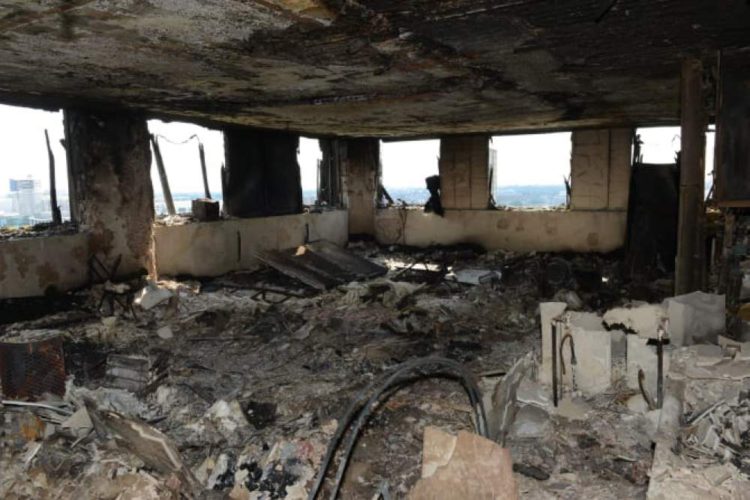By Gavin Mackintosh-
An independent spatial research group, Forensic Architecture, is seeking footage of the fatal fire at Grenfell Tower in order to create a 3D video that could build a better understanding of how the disaster unfolded.
Research agency Forensic Architecture, based at Goldsmiths, University of London has announced a new project investigating last year’s Grenfell Tower blaze in London. The group are calling on the public to contribute footage of the devastating fire, which will be used to build a model and timeline of the event, made available as an open resource.
The group of architects, scientists, and researchers based at Goldsmiths, University of London is asking for submissions of footage via its Grenfell Media Archive.
Forensic Architecture are convinced many of the witnesses of the fire hold recordings on their smartphones or cameras that could help piece together how the blaze that killed 71 people began and spread.The Grenfell Tower fire tragically occured on the night of 14 June 2017, when a fridge exploded and sparked a fire engulfing the social housing block – 71 people lost their lives and over 70 were injured. The building’s cladding panels are believed to have accelerated the spread the fire. The incident is currently the subject of a public inquiry and criminal investigation and a review of the UK’s fire and safety regulation. Forensic Architecture want to build a 3D video of the blaze. To do that, they will collect videos that were taken by Londoners of the fire, with the aim for ‘the public to explore and better understand the events of the night of the fire’.
The organisation plans to use the footage to build a free public resource, synchronising the videos and placing them within a 3D model of the tower in west London
“Each of these recordings might have captured only a small part of the event, but together they add up to an extensive and powerful picture of what happened that night,” said a statement from the group.
The fire which broke out on 14 June 2017 is currently subject to both a criminal investigation, and a review of the UK’s fire and safety regulation.
An interim report of the review released in December 2017 revealed that safety regulations for high-rise buildings are “not fit for purpose”.
“We routinely work in areas of conflict or violence around the world, but the Grenfell Tower fire has brought our focus back to the city in which we live and work,” it continued.
“We want to combine the techniques we have developed with the thousands of pieces of evidence captured by cameras across London, to create a powerful way for members of the public to better understand how this unprecedented tragedy occurred.”
“The project is long-term and open-ended, and could ultimately be put to a number of uses,” Bob Trafford, a researcher at Forensic Architecture, told Dezeen.
“We only hope that offering our platform as a public resource will support investigations and analysis across civil society, in line with Forensic Architecture’s foundational belief that the interests of transparency and democratic accountability are well served by a strong non-state capacity for forensic analysis and investigation,” he added.
“We have not to date been approached by the public inquiry, but we do have experience of working with parliamentary inquiries, UN commissions of inquiry and legal processes.”
The application of aluminium composite cladding panels to the facade during renovation works have been blamed for the quick spread of the fire, resulting in wide-spread safety checks on high-rise buildings across the UK. Dozens of cladding systems have failed the checks and the decision was made to begin stripping some towers of their cladding.
Forensic Architecture works to develop “counter forensic” techniques that can be used to reveal human rights violations. Previously it has worked with groups including Amnesty International and Sea Watch to present legal cases.
Previously the group carried out a digital reconstruction of detention centre used to hold political prisoners near Damacus from the eye- and ear-witness accounts of survivors.
An exhibition of the group’s research has just opened at the Institute of Contemporary Art in London.








